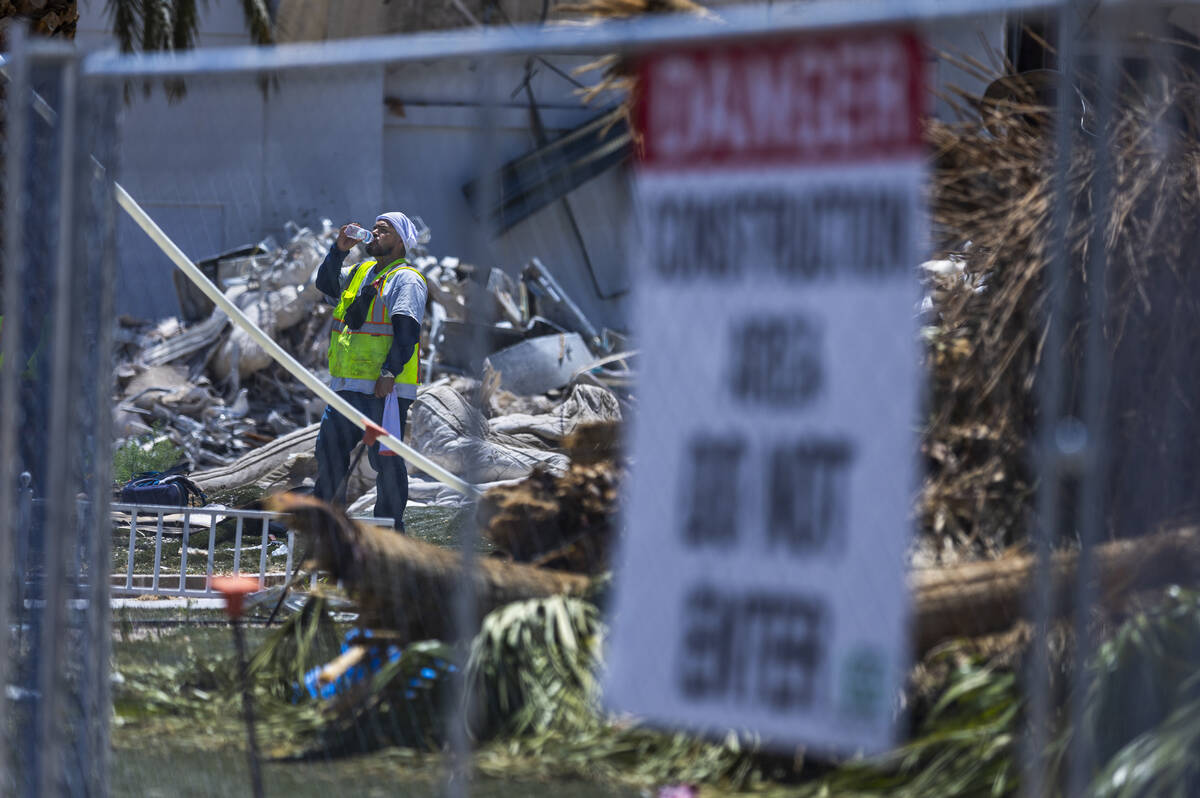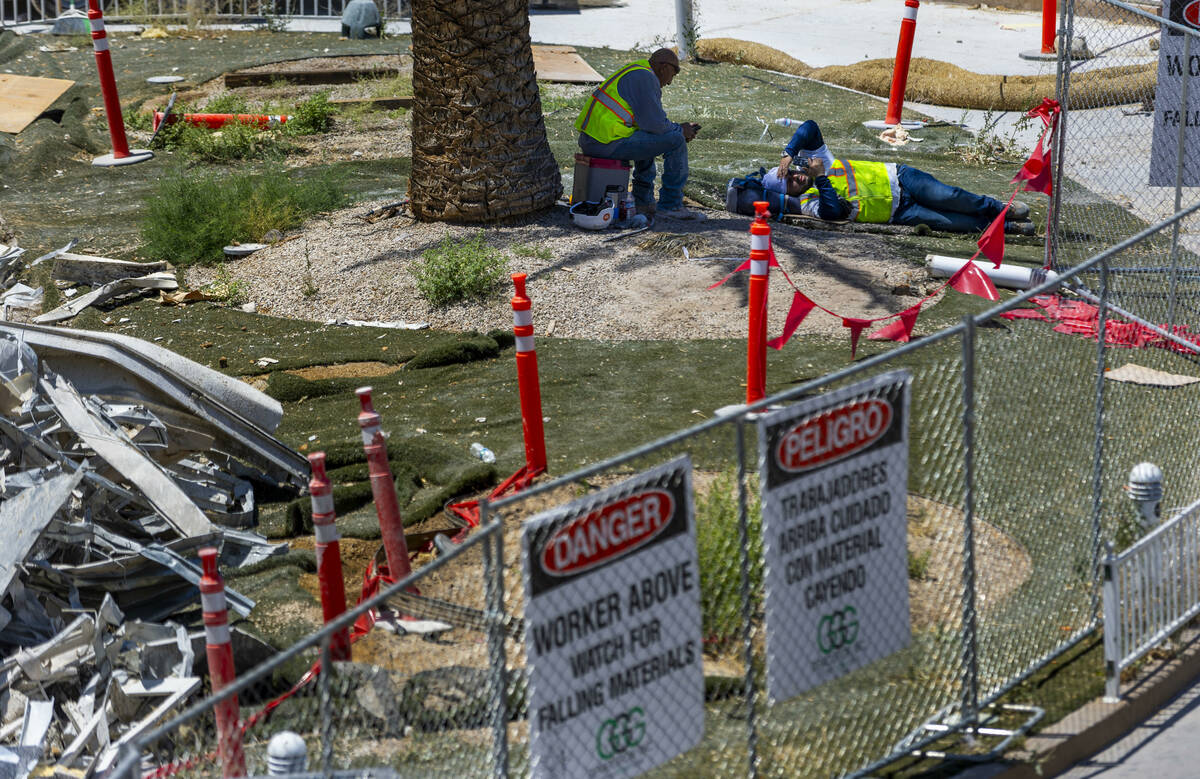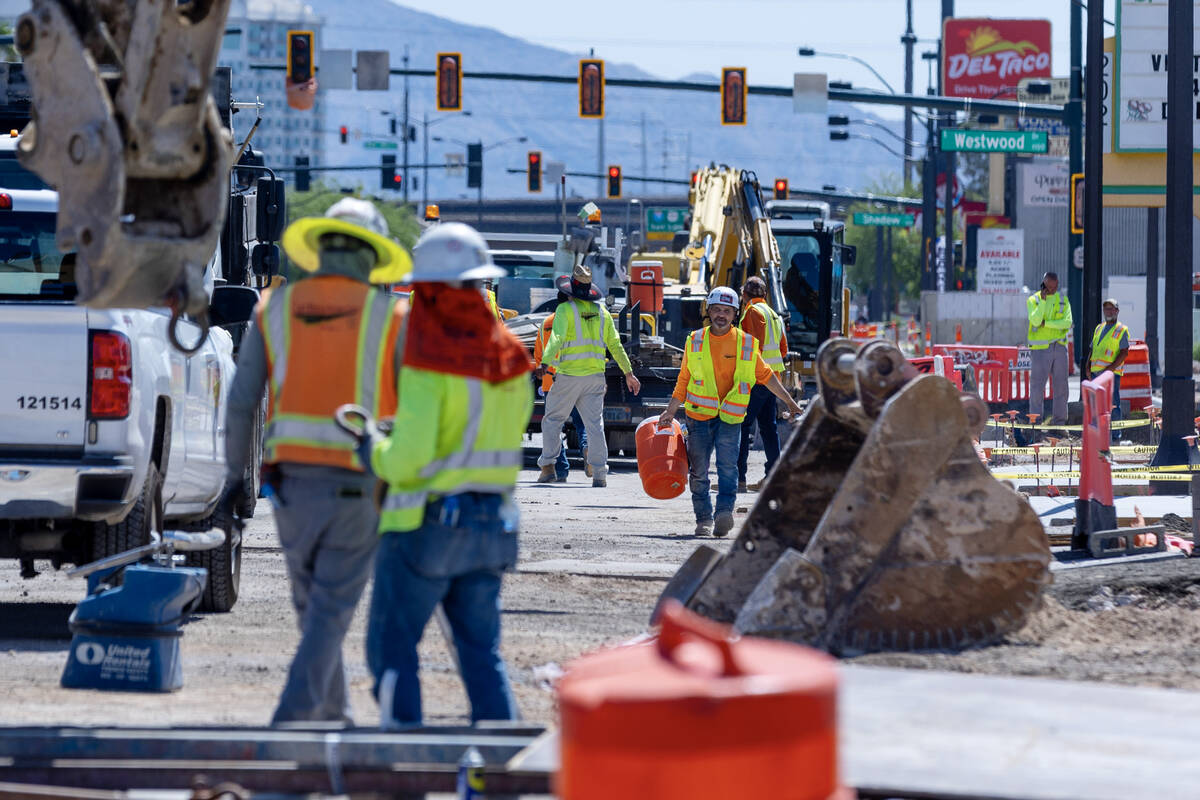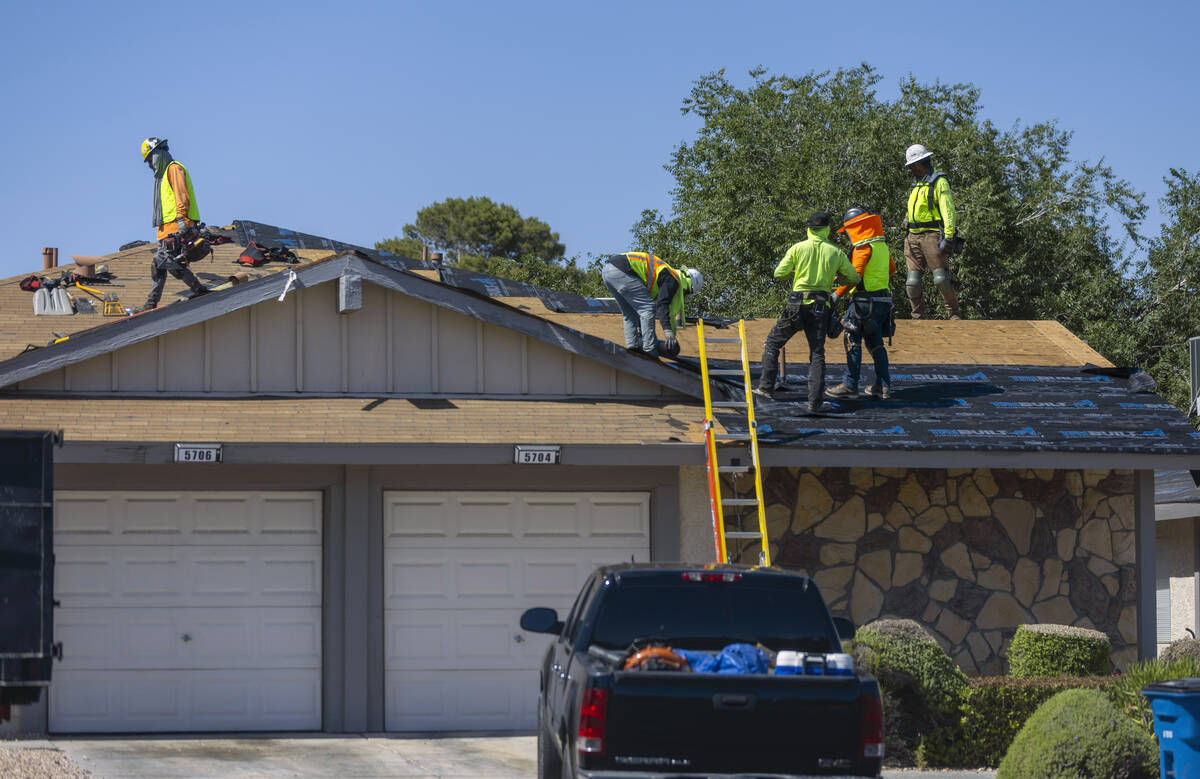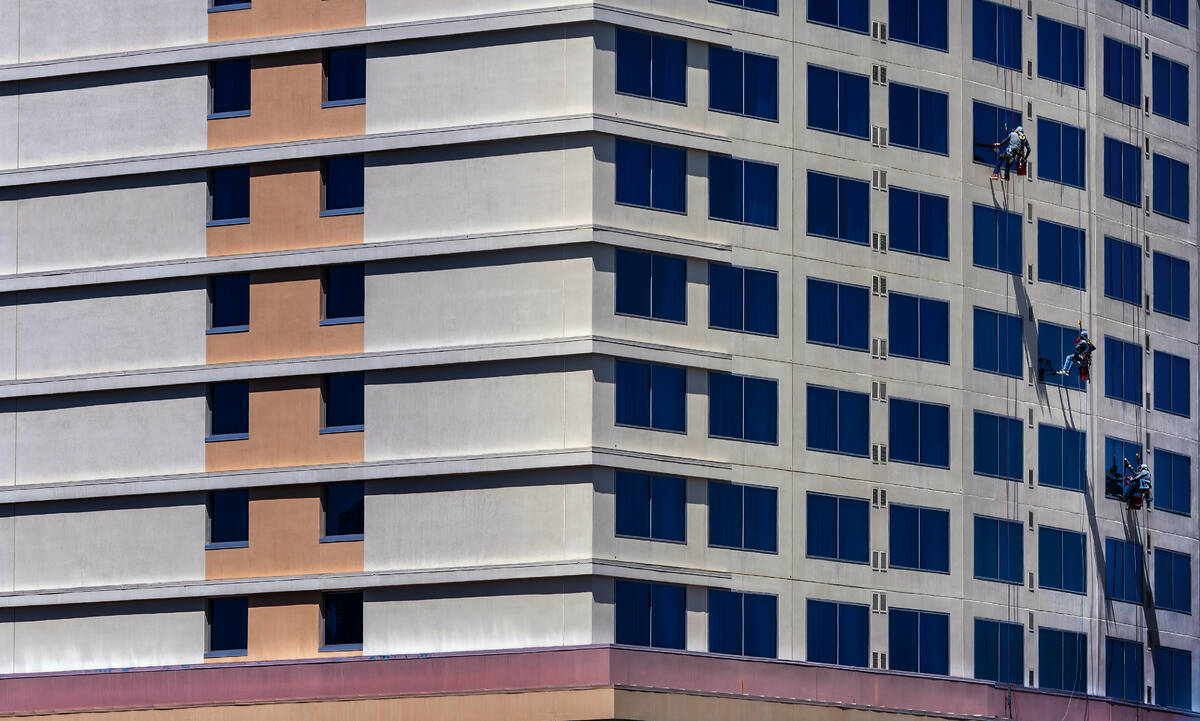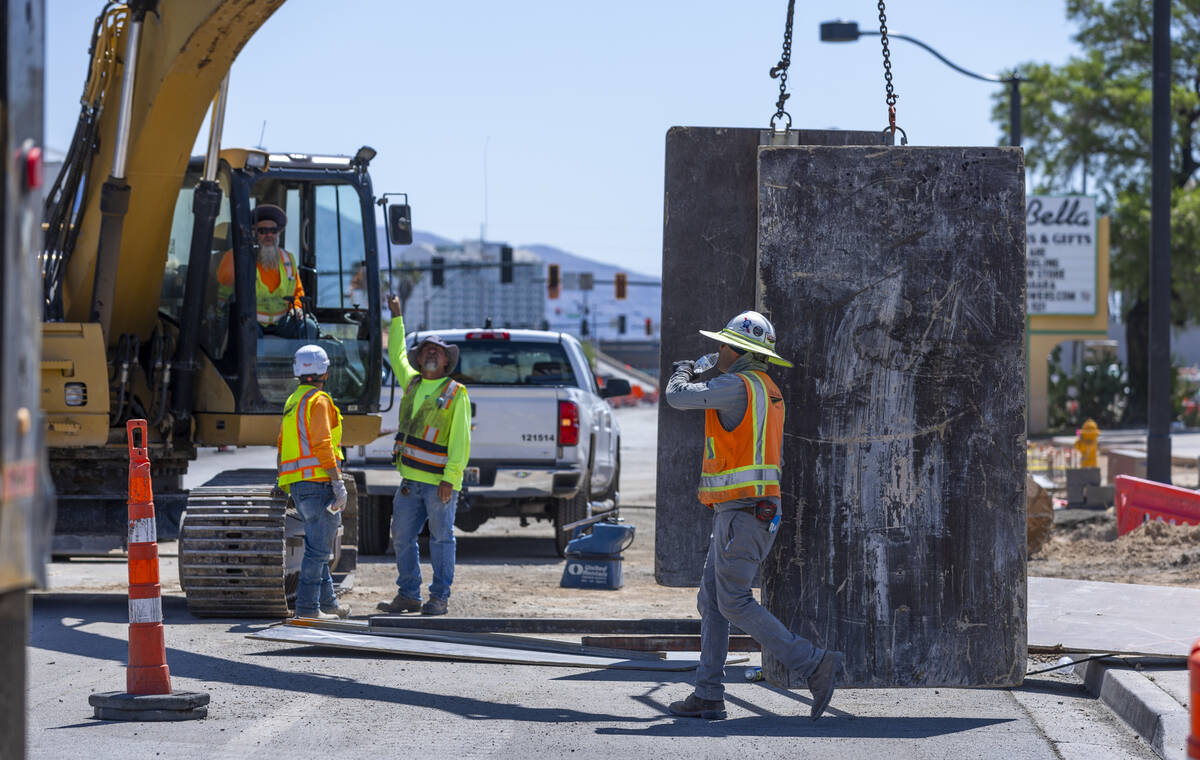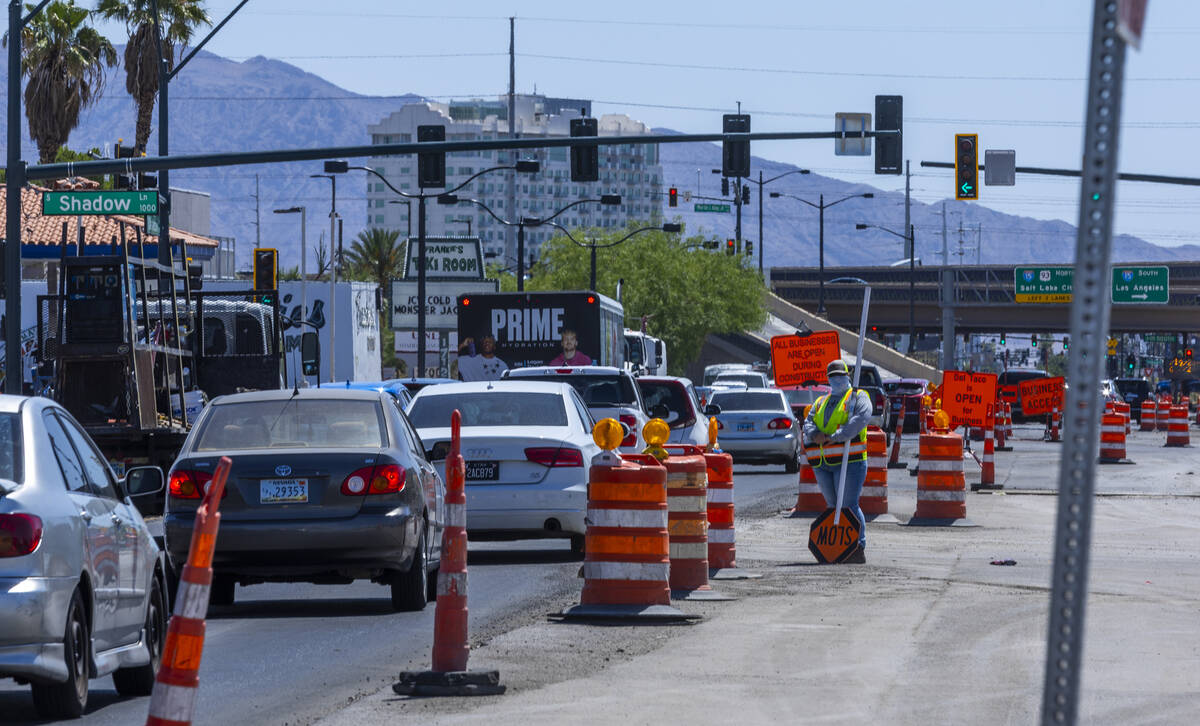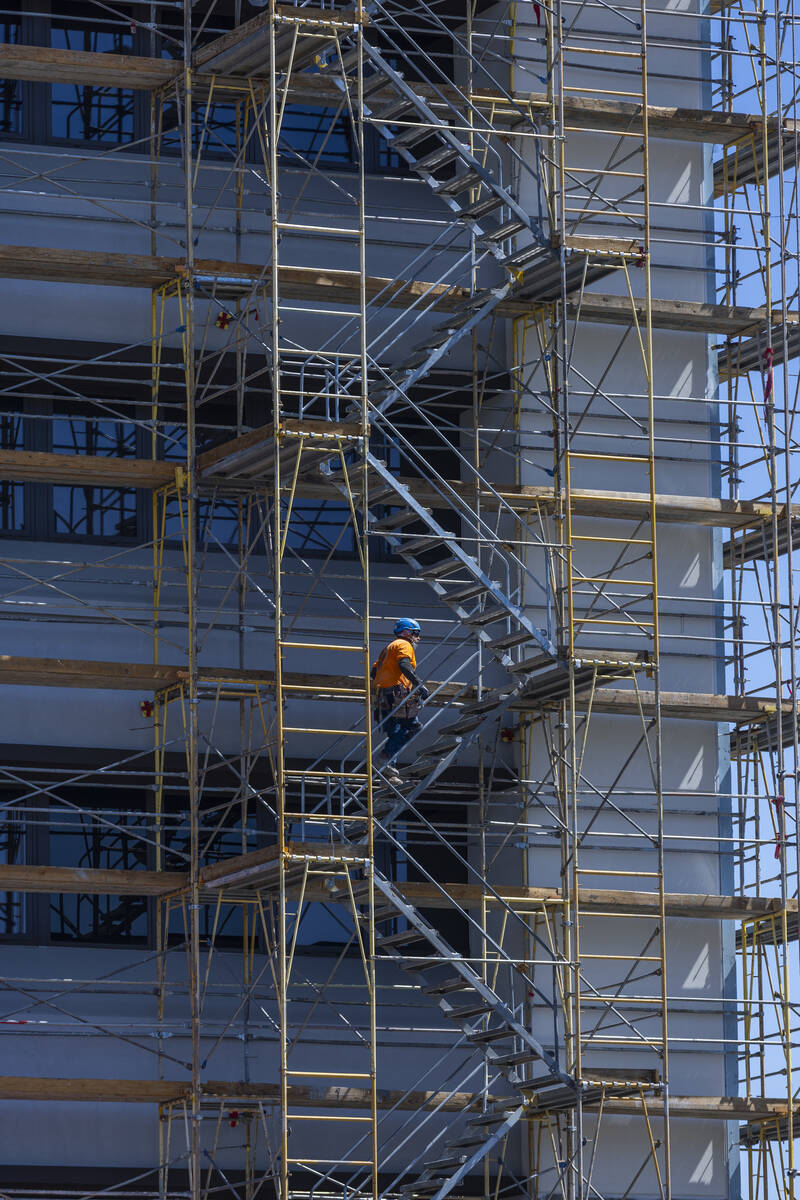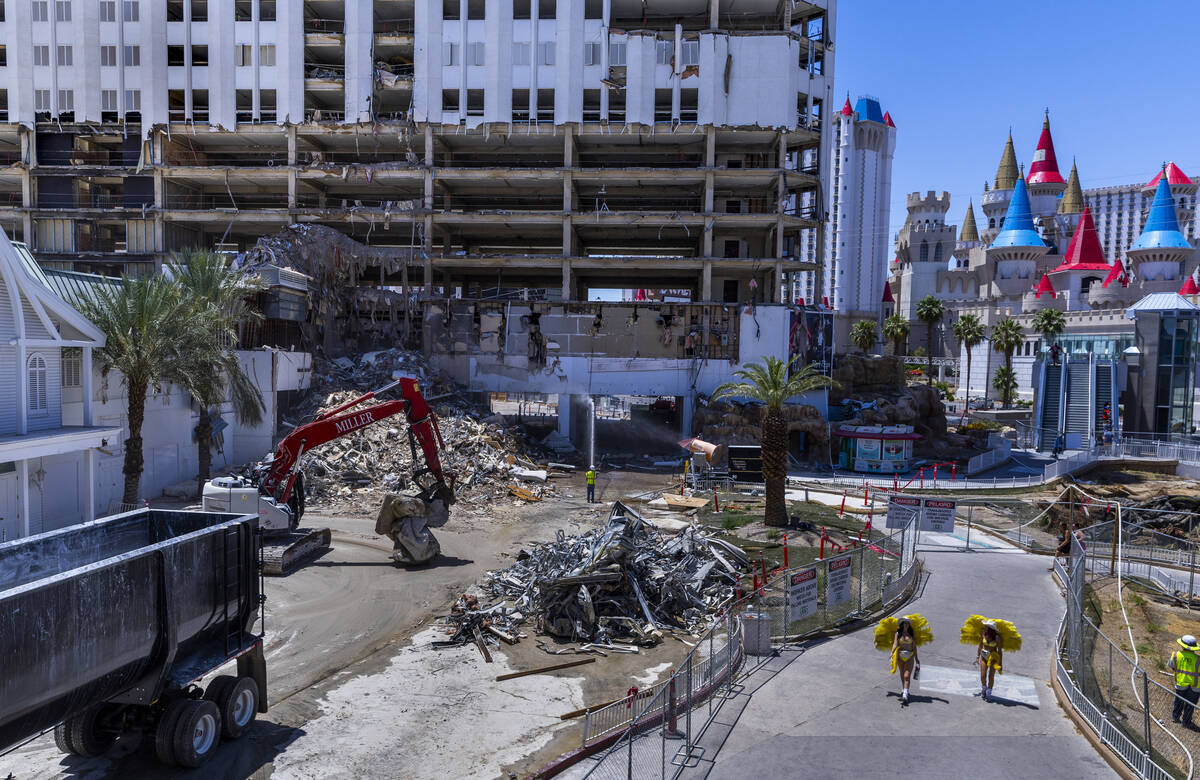As extreme heat kills more Nevadans, OSHA bets on worker protections
It’s not just a dry heat in Las Vegas — it’s a deadly one.
The punishing triple-digit temperatures of the Mojave Desert take a toll on those who work outdoors, like construction workers, Strip pool attendants and landscapers. And for years, even though hundreds of Nevadans have died from heat-related illnesses, the state hasn’t required companies to protect them.
That might change in 2024.
After a state bill failed in the last legislative session that would have spurred regulations to shield workers from temperatures above 105 degrees, the Nevada Occupational Safety and Health Administration is working on new requirements that would force businesses to set their own rules relative to heat.
Rather than lobby for support in the next session, OSHA will present a proposal to the Nevada Legislative Commission before the end of the year, circumventing the need for multiple committee votes or governor approval.
“We live in Nevada and have all experienced the heat every day in the summertime,” said Victoria Carreón, a state administrator who oversees OSHA. “It’s important to be ready to deal with it and prevent heat illnesses that could be catastrophic for workers.”
Deaths, complaints more than double in Southern Nevada
Perhaps the best indicator of the need for new rules is exhibited by the number of heat complaints that Nevada’s workers filed with OSHA last year.
There were 346 complaints filed in 2023, nearly a 65 percent increase from the amount filed in 2022.
Past Las Vegas Review-Journal reporting found that most complaints are generally from those who work indoors over issues like hot ovens and broken air conditioning. The number of complaints peaks in July, when temperatures are the hottest.
And so-called extreme heat, or abnormally high temperatures, is only worsening across the nation as the world’s carbon emissions change the climate.
An Associated Press analysis found that 2023 was the deadliest year on record across the country when it came to heat-related deaths. Southern Nevada is no different.
The Clark County coroner’s office tallied 307 deaths related to heat last year — a more than 80 percent increase from 2022, according to data obtained by the Review-Journal. A spokeswoman said the county began to investigate deaths that could be heat-related in more detail in 2021.
Dan Burc, a National Weather Service meteorologist in charge of issuing heat warnings in Las Vegas, said at a county press conference in early May that the city hasn’t experienced a record low temperature since June 1999.
Some summer days, temperatures won’t dip below 90 degrees even at the coolest hour, he said.
“You can’t ignore the fact that our climate is changing,” Burc said. “The data shows that we are heating up over time.”
Nevada takes unique approach to worker protections
Though other states have protections that are activated once a certain temperature threshold has been passed, Nevada is taking a different, unique approach.
If passed, every company would evaluate the needs of its workers and submit a heat action plan, said Carreón, the state administrator. This means much of what each company decides would be on its own terms, though OSHA would have the power to hold the company to its promises.
In other states like Texas and Florida, Republican-dominated legislatures and governors have stifled efforts to create mandatory heat protections in local governments, often because of pressure from industry leaders.
However, in Nevada, Carreón said OSHA is working directly with business leaders and trade groups that represent sectors that would be affected.
“Everybody wants to make sure they’re very cognizant that we are in Nevada, and this is a very hot environment,” Carreón said. “The stakeholders involved want to make sure workers are protected.”
Federally, a spokesperson said the Department of Labor is initiating the process to create a national heat standard that would be triggered by temperature thresholds. It likely would mean more breaks when it gets hotter.
The specifics of the national rule are still being decided, but it could add to what’s required of Nevada workplaces beyond a self-decided, company-specific plan. Nevada’s proposal still has more hurdles to pass, including more meetings and a Legislative Commission hearing.
Contact Alan Halaly at ahalaly@reviewjournal.com. Follow @AlanHalaly on X.



